
Concept art is one of the foundations that a movie is built on, translating an idea into an image to dictate the direction of a film's production. Having originated from another visual medium in the form of comic books, it makes sense that Marvel Studios spends a great deal of time developing and iterating on their ideas through the use of concept art.
Unfortunately, this means a lot of concepts have to be passed up, in favor of ideas that will best fit the story being told and please the maximum amount of viewers possible. Countless pieces of artwork thusly remain, depicting fascinating concepts that were either too basic or too out there to be used in the films.
So here are the best and most interesting pieces of concept art from 10 different Marvel films, and ways in which of some of the ideas could be reincorporated back into the Marvel Cinematic Universe.
Ant-Man - Arnim Zola

(Marvel Studios)
Ant-Man had a tumultuous production, following Edgar Wright's departure from the project due to creative differences just before the start of filming. After scrambling to get the film back on track, Marvel Studios settled on Peyton Reed to continue where Wright left off. But many have since wondered what an Edgar Wright Ant-Man film could have looked like.
This concept art by Josh Nizzi depicts a version of Arnim Zola that is much closer to his portrayal in the comics, where he is encased in a metallic body. He appears to be sat at a table, almost as if he is acting as an interrogator. There are limited scenes where Arnim Zola could have been featured in the film that the fans got. Zola could have possibly worked at Pym Technologies under the leadership of Darren Cross, using his knowledge of HYDRA technology at the company. SHIELD is also briefly featured at the very start of the film, so there is a possibility that he could have shown up in an extended version of this scene.
This calls into question whether this artwork is a remnant of Edgar Wright's version of the film. This is purely speculation but Toby Jones was announced to rejoin the cast of Captain America: The Winter Soldier in April 2013 to reprise his role as Arnim Zola. Therefore, it is very likely that Wright had at least some knowledge that he could use Arnim Zola around the time that he was working on the film, still being on the project through to May 2014.

(Marvel Studios)
Patrick Wilson was also cast in an undisclosed role but left the project after Wright did. Nizzi also made a version of the concept artwork that depicts Zola on a screen connected to the body of a man with blonde hair, looking relatively similar to Wilson in appearance. This is a bigger stretch still, but with Wilson's character gone and Zola nowhere to be seen in the final film, is it possible that Wilson's exit coincided with the removal of the character from the new draft of the film? Probably not, but it's fun to speculate all the same.
There is still a possibility for Zola to return in some form. Although he was seemingly destroyed in Captain America: The Winter Soldier, there is the potential that he has tucked himself away in a small corner of the Internet, or that there is another copy of his consciousness in another location.
Thor: The Dark World - A Different Valkyrie
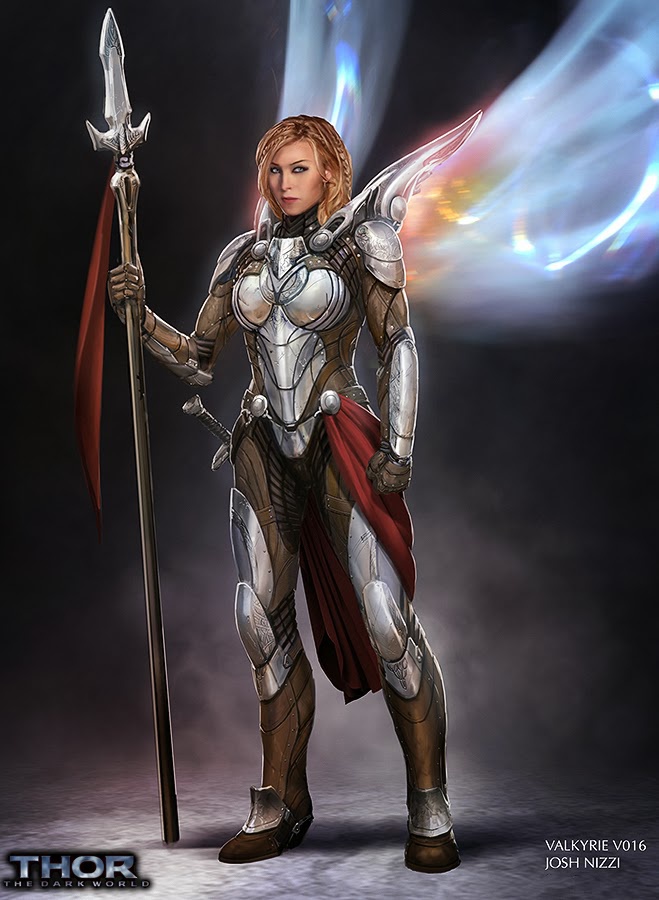
(Marvel Studios)
Thor: The Dark World is quite a crowded film. It has the unfortunate task of trying to balance between Thor, his relationship with Jane Foster, the demise of Frigga, Sif and the Warriors Three, the Aether, the Convergence, Darcy and her boyfriend, Heimdall, Erik Selvigg, the redemption, death and return of Loki and, everyone's favourite MCU villain, Malekith. It's a lot to take in. Despite this, concept art from the film suggests that an additional character may have been thrown in the mix, this being Valkyrie. How Valkyrie would have factored into the plot of Thor: The Dark World is unknown, but judging from the number of plotlines and characters in the film, it is likely that her inclusion would have left it even more muddled.
This version by Josh Nizzi would have been a much more traditional incarnation of Valkyrie, taking inspiration from the character of Brunhilde from the comics. One key difference from the comics and the MCU incarnation is that this version possesses iridescent rainbow wings, likely granting the power of flight. Perhaps Valkyrie could gain this ability in Thor: Love and Thunder, allowing her to fly freely without the need of her pegasus with pride and grace.
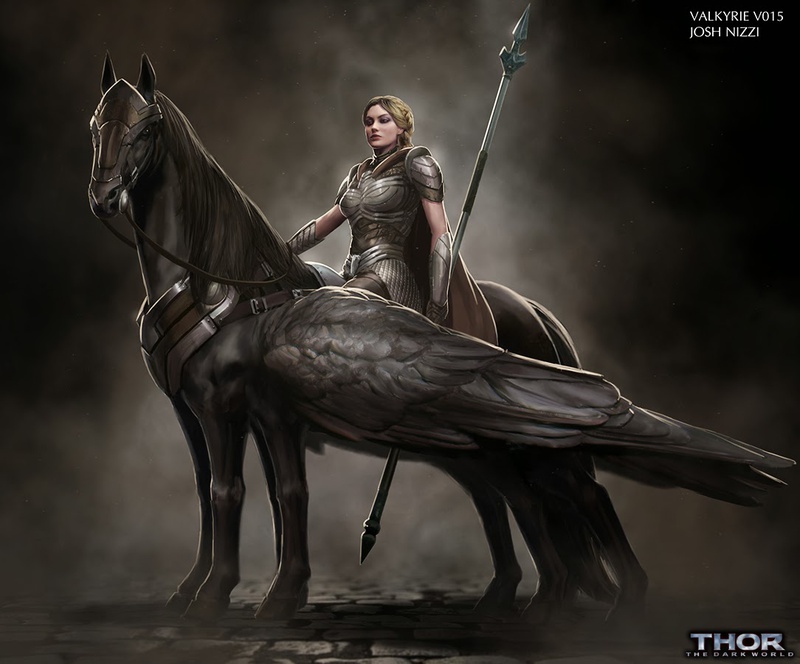
(Marvel Studios)
Speaking of her pegasus, one idea that has carried over into the MCU from Nizzi's artwork is the mount that Valkyrie uses to fly around in Avengers: Endgame. While the appearance has been changed since then, it is clear that Marvel wanted has always wanted Valkyrie to fly high. This concept art is even more faithful to the comic appearance of Brunhilde, replicating her comic costume into a realistic setting with additional armored plating. Brunhilde also wields a large spear, the weapon that Valkyrie would opt for in Endgame over her dual swords from Thor: Ragnarok.
A Valkyrie believed to be Brunhilde, or largely inspired by her, does appear in Thor: Ragnarok. During Valkyrie's flashback, a blonde Valkyrie saves her, who physically resembles Brunhilde's comic appearance. Whilst Tessa Thompson's Valkyrie is believed to be the last of her kind, perhaps Taika Waititi will revisit Valkyrie's kind and reincorporate Brunhilde into the MCU somehow. Valkyrie is supposedly looking for a queen in Thor: Love and Thunder, so Brunhilde could be where Valkyrie's search takes her
Black Panther - Shuri as the Black Panther

(Marvel Studios)
Black Panther is full of vibrant and complex designs, drawing from Afrofuturism influences to flesh out the world of Wakanda. Shuri is one of many characters to explore a variety of costumes for the film, but one in particular stands out amongst the rest.
Shuri decides that it is her turn to wear the suit and become the Black Panther in this concept art from Marvel's Black Panther: The Art of the Movie. This costume is a sleek, form fitting outfit similar to T'Challa's suit from Black Panther and Infinity War, except she also wields her two panther-shaped Vibranium Gauntlets. While she is not wearing a cowl in this artwork, the mask probably would have formed from Vibranium around her to match her brother's suit. Her haircut is notable too, being the very same look from the comics when she borrowed the identity.
Speculating from this artwork, Shuri and T'Challa may have shared the Black Panther title in the film, being an alternate message to the film where they share rule of the throne. This could also have been one of the options upon T'Challa's supposed death in the film, where Shuri has to adopt the title in her brother's stead.
Shuri has donned the Black Panther mantle in the comics, but is likely this route was avoided to give T'Challa more of the spotlight in his first solo outing. There is, of course, still room for Shuri to become the Black Panther in the sequel, which would allow the film to pull an Alien sequel and be named Black Panthers.
Guardians of the Galaxy Vol. 2 - Alternate Casting Options for Ego
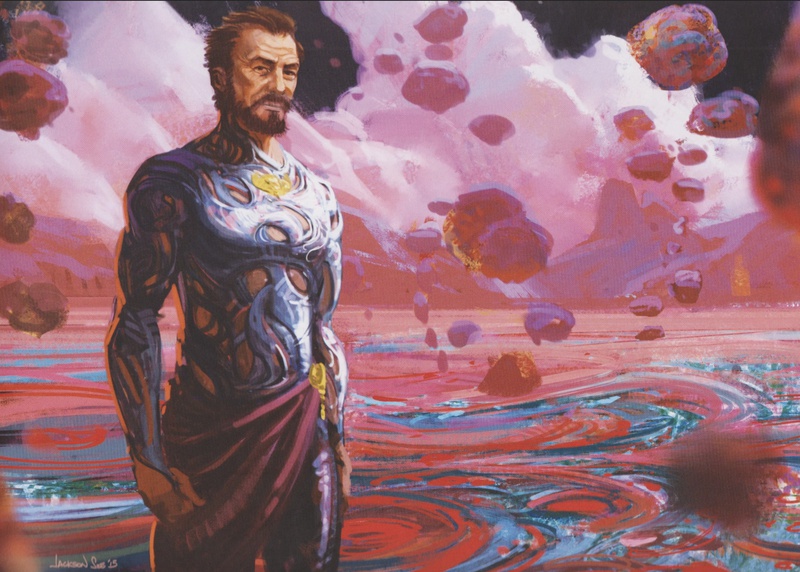
(Marvel Studios)
Star Lord's father was a unique spin on the version seen in the comics, being an amalgamation of the characters J'Son of Spartax and Ego the Living Planet. Kurt Russell was ultimately chosen to play the role, and did a terrific job simultaneously portraying a warm parental figure, a charismatic womanizer and a psychotic, for a lack of a better term, egomaniac. Concept art from Guardians of the Galaxy Vol. 2, however, suggests at one point that fans would have received an entirely different Ego.
The above concept art by Jackson Sze depicts Ego as being portrayed by Bryan Cranston. This Ego wears much more alien clothing, as if the metallic material is grafted to the very skin on his body. This hints more towards Ego's Celestial origin, allowing him to alter his appearance at will.
The choice of Bryan Cranston for Ego makes sense for the range that is required for the character. Cranston is most famous for his portrayal of Walter White on Breaking Bad, where he conceals his power-hungry desires and aggressive outbursts behind a jovial family man facade. These skills would have certainly enabled Cranston to hone in on Ego's sadistic intentions, whilst simultaneously maintaining the front of being the dad that Peter always wanted growing up.
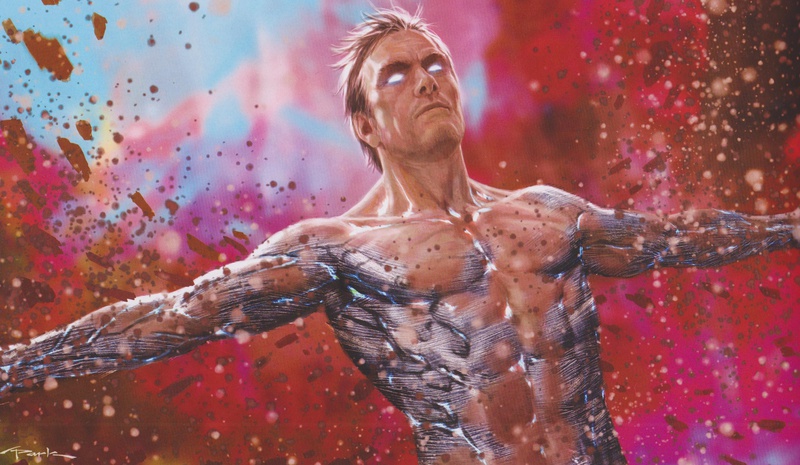
(Marvel Studios)
Another piece of concept art by Andy Park reflects another casting option in Michael Fassbender. Similar to the previous artwork, Ego possesses metallic coating melded with his skin in order to indicate his Celestial heritage. Power radiates from Ego here, with a flurry of rubble and soot surrounding him as his eyes glow with a calm rage.
This would have seen a much younger portrayal of Ego. Whilst he is a Celestial and his outward appearance would not necessarily reflect his age, having Ego look close to the same age as Peter may have caused some cognitive dissonance. Fassbender is also known for playing much more cruel and calculating characters such as Magneto and David from Prometheus, so this may have been a more outright villainous version of Ego.
Whilst Ego is unlikely to return in a future MCU instalment, Fassbender's ethereal appearance is admittedly quite similar to that of Adam Warlock.
Avengers: Infinity War - The World Serpent
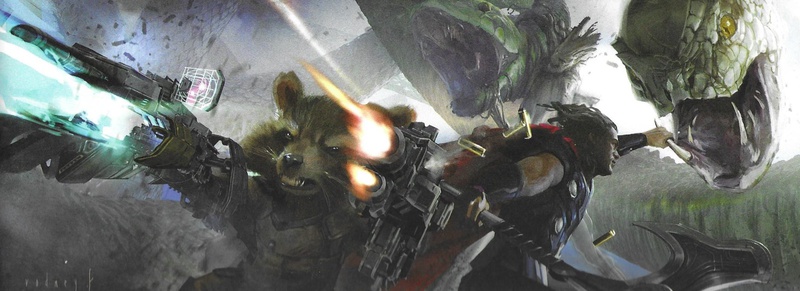
(Marvel Studios)
The concept art of Avengers: Infinity War is chock-full of interesting scene ideas and character choices, that would have significantly shifted the events of the film and sent ripples through the MCU. A baby version of Thanos may have provided more insight into the villain's past and rivaled the cuteness of Baby Yoda, whereas Nick Fury's death at the hands of Corvus Glaive could have prevented his appearance in subsequent MCU films like Spider-Man Far From Home.
A whole section of the film may have been completely altered, as Thor, Rocket and Groot initially seemed to have a much different adventure in Infinity War as depicted in this art by Rodney Fuentebella. Rather than traveling to Nidavellir to acquire Stormbreaker from Eitri the dwarf, this version of the film would have seen Thor facing Jörmungandr, the World Serpent. This was one of the first glimpses that fans received of Avengers: Infinity War, albeit largely cropped to obscure the inclusion of a gigantic snake. This suggests that this would have been a very early idea in pre-production, before being scrapped in favor of the weapon quest seen in the film.
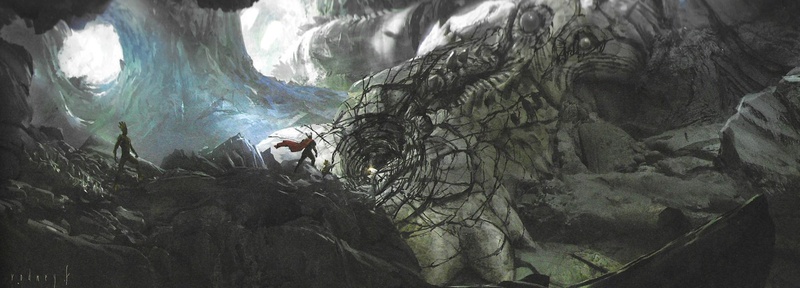
(Marvel Studios)
While the means would have been different, the goal would have remained the same. This additional piece of artwork by Fuentebella shows that Stormbreaker would have lied inside the World Serpent itself upon its defeat. Thor's mission to retrieve a 'Thanos-killing' weapon would have been more focused on conquering a foe through a demonstration of strength, as opposed to the more personal journey pushing oneself towards self-sacrifice. This also shows an alternate version of the World Serpent, being much larger in scale and possessing only one head.
In Norse Mythology, the World Serpent is Thor's arch enemy, as well as being the child of Loki-- somehow. The World Serpent is said to be able to wrap itself around Midgard, i.e. the Earth, enough to be able to hold its own tail. When the World Serpent releases its tail, Ragnarok begins and Thor must defeat Jörmungandr. The concept art seems to retool this mythology, requiring the two to face under different circumstances. The below artwork by Tully Summers stretches this 'Serpent' moniker, providing the beast with extra appendages to deal more damage.
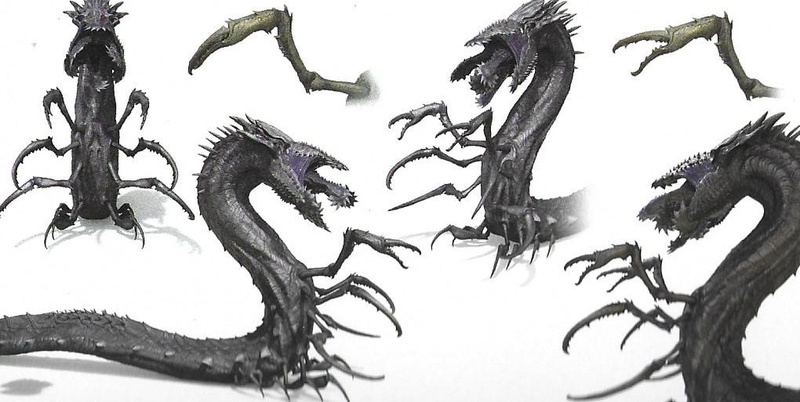
(Marvel Studios)
With Ragnarok having already occurred and leaving Asgard in ashes as a result, it is unlikely that Jörmungandr would make a future appearance due to its heavy ties with this event. Thus, the World Serpent's role would have to be altered in order to fit appropriately in Thor: Love and Thunder. Alternatively, Marvel Studios could take Jörmungandr's association with Loki into consideration, possibly allowing for it to appear in the Loki series on Disney+ in some form.
Avengers: Endgame - The Frost Giants

(Marvel Studios)
The final battle against Thanos and his army was the ultimate culmination for Avengers: Endgame, bringing together characters from all corners of the Marvel Cinematic Universe for one united goal to defeat the Mad Titan. This included obscure characters like Howard the Duck, to different groups seen throughout the films such as the Wakandans and the Ravagers. At one point, a certain species was considered to join the fight, that being the Frost Giants from Thor.
This concept by Jerad S. Marantz portrays what they could have looked like in the film. This design is a worthy evolution from their initial appearance, covering their blue skin in crystaline armor. Which side the Frost Giants would have decided to be affiliated with is up in the air. They have been shown as villains in the past, but the threat of being wiped from existence may have motivated them to change their allegiance.
Including them as part of Thanos' army may have also really messed with the black and gold aesthetic he was going for with the Outriders and the Chitauri. Nevertheless, a surprise appearance from the Frost Giants on either side would have made Endgame's climactic showdown even grander.
The Frost Giants have not made an appearance since their debut in the original Thor. With the Loki Disney+ series centering around the titular character's self discovery, perhaps the former son of Jotunheim will have to return to his roots to fully understand himself and grapple with the deceit he committed against his father Laufey.
The Incredible Hulk - Gray Hulk?

(Marvel Studios)
Bruce Banner is known for his ability to morph into the alternate persona of the Hulk, but there are other transformations of the Hulk that have yet to be adapted from the comics. Banner has become the monstrous Devil Hulk, and the intelligent Doc Green, which seems to have been realized through the 'Smart Hulk' seen in Avengers: Endgame.
But one Hulk identity that is frequently brought up amongst fans is the concept of the Gray Hulk. This goes back to the Hulk's very first appearance, where the gray color was used initially but changed to green soon after due to inconsistencies with the gray pigment. This was then re-purposed into the Joe Fixit character, an alternate personality for Bruce Banner that was more of a city slicker, tough guy.
This concept art by Walter Flanagan seems to suggest that the Gray Hulk was considered as far back as The Incredible Hulk. While it could be argued that this piece of artwork simply portrays Hulk in an odd bit of lighting, there are plenty other pieces of concept art where the Hulk is portrayed as being green. A gray transformation would not be too out of left field for the Hulk's introduction into the MCU, due to this likely paying homage to the Hulk's first appearance.
This would not be the only time that a Gray Hulk would be considered to appear in the MCU. A version of Gray Hulk was, at one point, going to be featured in Avengers: Age of Ultron, in his fight against the Hulkbuster but was ultimately changed during post-production. Remnants of this idea still exist, with a Funko Pop figure depicting this iteration of the Hulk with a muted color palette.
The Hulk's future is uncertain, particularly after his evolution into the 'Smart Hulk' persona seeming to be the natural conclusion for the character. There are, however, so many avenues that the Hulk has yet to explore, with the Gray Hulk identity being one of them. The most likely next appearance for Bruce Banner would be the upcoming She-Hulk Disney+ series. Perhaps Jennifer Walter's metamorphosis into She-Hulk will trigger a new transformation for Banner into the Gray Hulk persona.
Ant-Man and the Wasp - The Quantum Realm

(Marvel Studios)
The Quantum Realm was briefly explored in Ant-Man and the Wasp as well as being one of the major plot devices of Endgame. Despite its significance, the MCU has shown little of what this mysterious dimension entails. These concept artworks show alternate versions of the Quantum Realm, providing a glimpse at what this location could have been capable of.
The above artwork from Marvel's Ant-Man and the Wasp: The Art of the Movie includes what appears to be different people from Scott Lang’s life being reflected by the Realm. While it is unclear who these are, at least one of them seems to be wearing an Ant-Man helmet, so this could be representative of Hank Pym or Scott himself. One of the bubbles seems to represent a couple, so could either be Scott's parents or Hank and Janet. These could alternatively be memories of Scott's, manifesting into a physical form through the energy of the Quantum Realm.
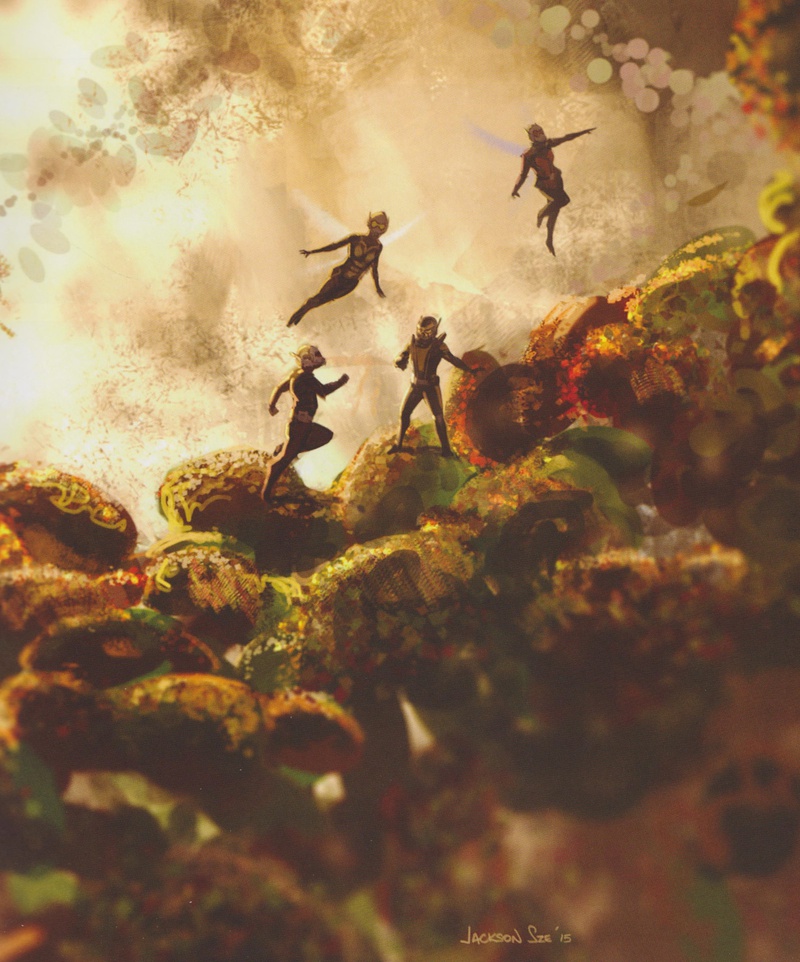
(Marvel Studios)
Another artwork by Jackson Sze shows multiple minuscule heroes traversing the lands of the Quantum Realm, leading to the idea that at one point Scott, Hope, Hank and Janet were intended to all venture down into this dimension together. One possibility is that this could have been a version of the post-credits scene, with all four heroes shrinking down to retrieve quantum energy. It should also be noted that Hank Pym has a version of the Yellowjacket costume, an identity that he holds in the comics and one that was used by Darren Cross in the first Ant-Man.
Whilst there is still a possibility that Hank could don this suit again, it is likely that Marvel Studios will stray away from its usage due to the negative connotations that it holds. There is always room for more exploration of the Quantum Realm in the upcoming Ant-Man 3. Ant-Man dipped its toes into the Quantum Realm and Ant-Man and the Wasp delved a bit deeper into its mysteries, so venturing into the weirder and wackier sides of the Quantum Realm for a full adventure could be the natural progression. Janet says in a deleted scene that there are "entire civilisations" in the Quantum Realm, so there are is plenty more for the gang to explore.
Captain Marvel - Kree Sentries
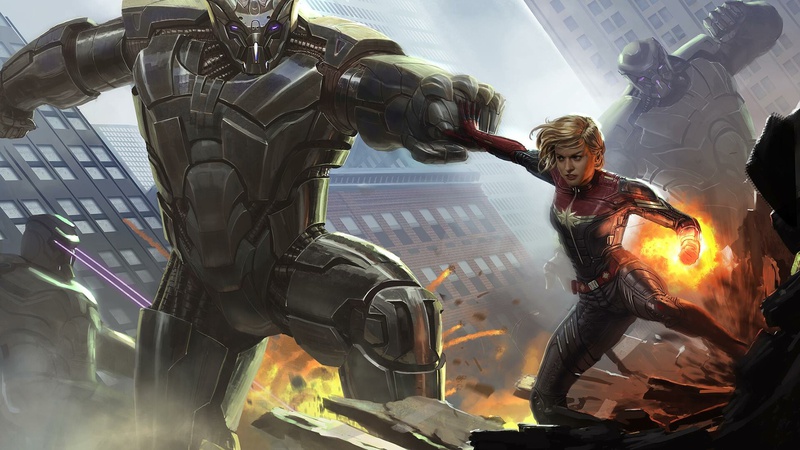
(Marvel Studios)
Few alien races are as consistent as the Kree, who are constantly showing up in various areas of the MCU. After appearances in both Guardians of the Galaxy entries, the blue extraterrestrials found themselves making a substantial impact on Agents of S.H.I.E.L.D. This continued into Captain Marvel, where the Kree were heavily involved in Carol Danvers' origin. After discovering the truth of her past and leaving the order, Carol was pursued by Starforce and the Kree Empire. However, in another version, an alternate faction of the Kree were sent after her.
Kree Sentries are front and center in this concept art by John Staub. Rather than the fleet of Kree ships led by Ronan the Accuser, Carol would have had to contend with Kree Sentries hunting her down. In the comics, the Sentries are mostly used for more defensive purposes, guarding military outposts on the Kree Homeworld Hala and throughout the Kree Empire. This role would have been altered for the movie, instead being tasked to search and destroy. Some criticized Captain Marvel's ease of eliminating the Kree fleet at the end of the film. Fighting back against Sentries may have given Carol more of a struggle in proving herself as a hero.
The Kree were left humiliated at the end of Captain Marvel, with a large portion of their army destroyed and their elite team Starforce defeated. As a result, the Kree may want to seek revenge on Carol Danvers in the sequel, so may employ new muscle in the form of Kree Sentries. With how much impact the Kree have already had on the MCU, it is likely that the alien race will return at some point in the future.
Spider-Man: Far From Home - Sandman?
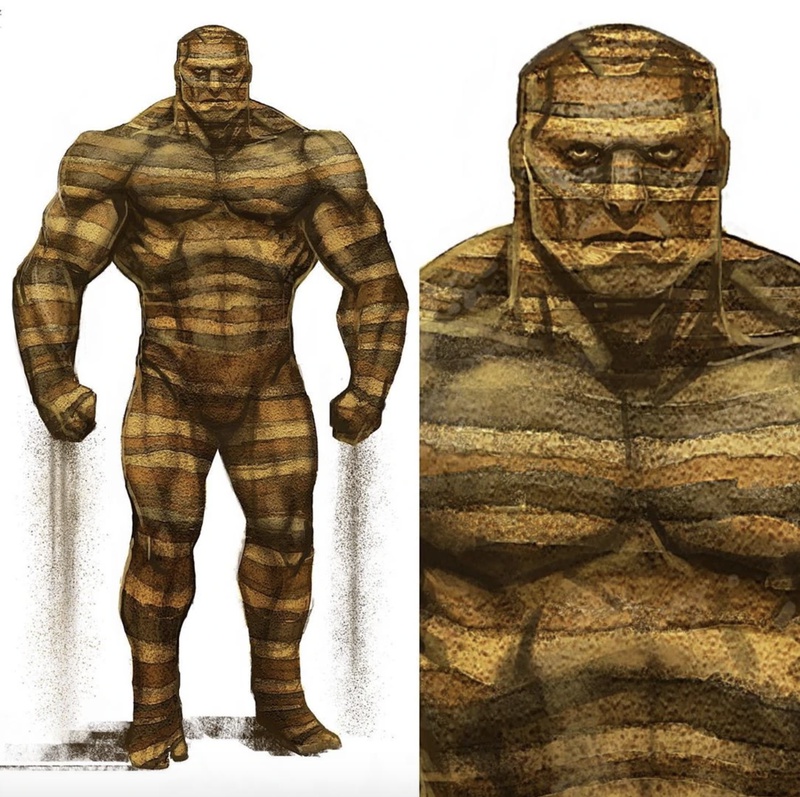
(Marvel Studios)
The latest film in the MCU Spider-Man: Far From Home ended Phase 3 with a bang, finally bringing a much-anticipated villain to the big screen. But while the fish-bowl-wearing illusionist hypnotized audiences with his charm and wit, the secondary villains received little love.
Possessing monstrous designs of varying scale, The Elementals served as an interesting 'faux-threat' throughout the film. The holographic creatures were never named outright, but director Jon Watts confirmed that they were each based on past villains from Spidey's rogues gallery, with the Earth Elemental "technically" being based on Sandman.
This concept art by Jerad S. Marantz supports this idea, portraying a much more recognizable version of Sandman. This design possesses a human-like face, a humanoid body and a striped pattern akin to Flint Marko's green shirt from the comics. This version even has a 'haircut' that replicates the iconic hairstyle that Marko sports. Other humanoid designs for the other Elementals exist as well, with Hydro Man and Molten Man looking closer to their comic counterparts. Perhaps Mysterio's original plan would have been to take down B and C-list villains in order to gain notoriety, rather than the world-ending threat seen in the final film.
This would be the first time that the MCU has reused one of Spider-Man's villains from a previous film, at least in some form. Kevin Feige has stated that past villains like the Green Goblin and Doc-Ock would be unlikely to return without "the right story". Therefore, this information in tandem with Sandman's brief appearance in Far From Home means that Flint Marko will probably not appear in a future Spidey installment. At least fans can find some solace knowing that a version of Sandman did return to the big screen, even if only for a short time.
This list only scratches the surface of the impressive MCU concept art that exists. From Doctor Strange and Iron Man switching outfits to a monument dedicated to Captain America's efforts in World War 2, there are a plethora of interesting ideas that didn't quite make the cut.
There is a good chance that there are also plenty other pieces of concept art that are being locked away in the Marvel vault, either to be used in a future film or to be withheld just for the sake of it. Hopefully Marvel Studios continues to release new concept art from its films past, present and future, so that fans can keep getting a peak behind the curtain on what could have been.












